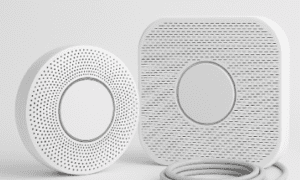In a world wired for instant sharing, where thoughts are typed, tagged, and tweeted in seconds, Yashodhan Kanoria chooses something quieter: ink. Almost every day, the systems engineer slips a small, scuffed notebook into his back pocket, not as a relic but as a compass. No digital timestamps, no cloud backups. Just pages filled with stray thoughts, half-sketched circuits, algorithm ideas, story fragments, and the occasional poem. It’s a personal archive of curiosity, a slow-burning incubator for ideas not yet ready for screens.
The Engineer with a Tinkerer’s Heart
Yashodhan lives and works in Miami, Florida, developing embedded systems and AI for smart devices at a major tech firm. He’s a Purdue electrical engineering grad, originally from India, and known around his workplace for his calm approach to chaos, debugging with a quiet intensity that earns trust more than attention. But when the workday ends, he often trades tools for a camera or a pen.
Unmarried and content with his own company, Yashodhan’s weekends are filled with street photography strolls, science fiction marathons, and beachside reflection. “I don’t mind the quiet,” he says. “That’s usually when the best ideas sneak in.”
Why Notebooks in a Cloud-First World?
“It’s not about nostalgia,” he explains. “It’s about pacing.” For Yashodhan, typing is too fast, too polished. Writing by hand introduces friction, the kind that gives ideas room to breathe. One page might begin with a quick sketch of a microcontroller sleep state, only to trail into a note about a peculiar shadow he noticed on a downtown wall. He doesn’t compartmentalize creativity.
Isolation as Fuel, Not Hindrance
Where others seek stimulation, Yashodhan finds clarity in stillness. He often writes at dawn before the city stirs, or during quiet coffee shop breaks with only the hum of a nearby fridge for company. “Solitude isn’t emptiness. It’s bandwidth,” he says. His notebook becomes a conduit for that bandwidth, a place to test hunches, play with abstractions, and imagine futures, both technological and fictional.
A Sketchbook of Possibility
There’s no table of contents, no logic to the layout, but he remembers each page’s geography. “The act of writing locks it in a different part of your brain,” he says. Sometimes he returns to an old sketch and realizes it predicted a bug or inspired a feature weeks later. Other times, he flips through a page just to laugh at the absurdity of a comic strip he once doodled—an AI-powered streetlamp having an existential crisis.
A Notebook of Quiet Defiance
In a city that never stops buzzing, Yashodhan’s pocket notebook is a quiet act of rebellion, a refusal to rush, to over-explain, or to digitize everything too soon. It’s a place where engineering meets poetry, and algorithms share space with metaphor. “We tend to think in finished products,” he says. “But the mess, the in-between, that’s where the good stuff starts.”
And so, day after day, Yashodhan carries his notebook like a soft-spoken sidekick. It listens, it absorbs, it waits. Because in his world, the next big idea might already be inked into page 47, disguised as a doodle drawn during lunch.





























